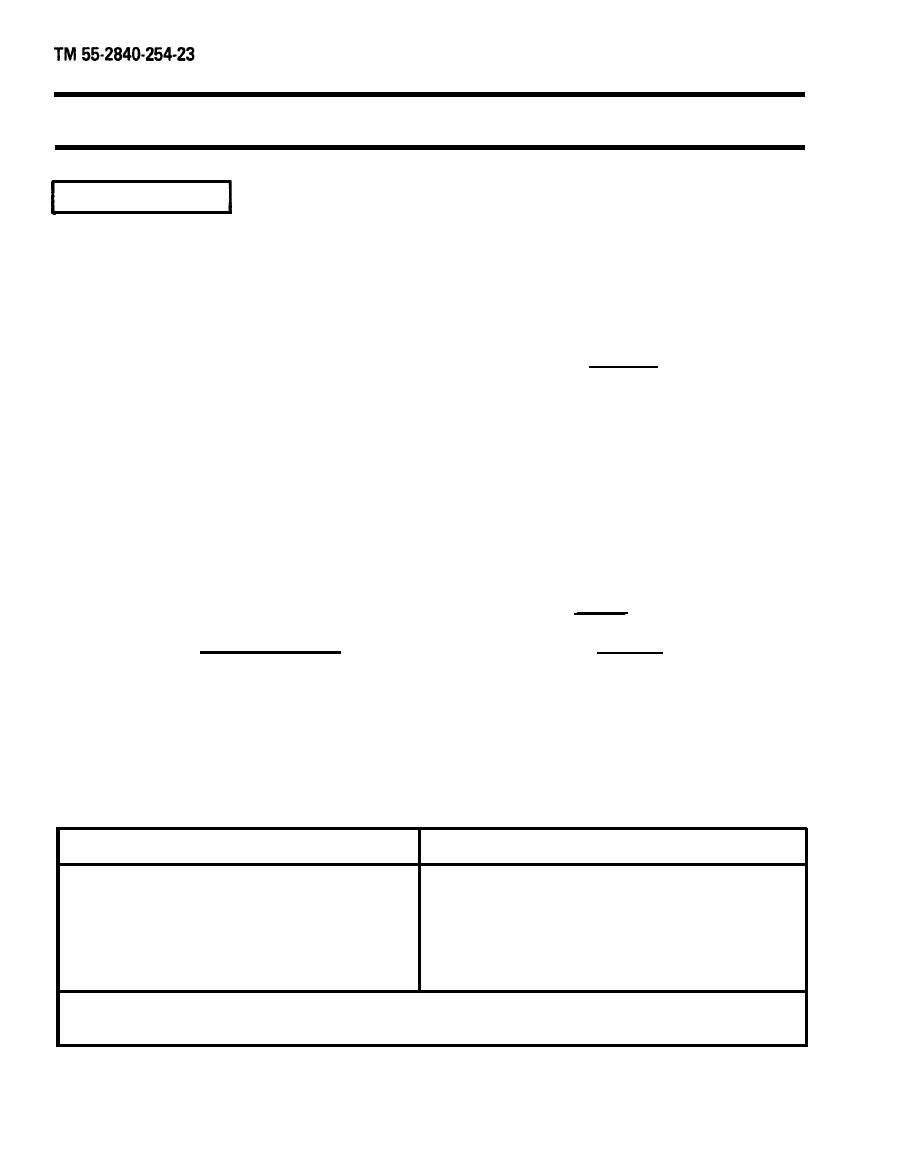
1-107
1-107 TEST ENGINE (AVIM) (Continued)
7. VIBRATION TEST
The engine test determines the vibration level of an engine through the range of N1 and N2 speeds. Vibra-
tion transducers, attached to adapters mounted on the engine and water brake, transmit electrical impulses
to the vibration meter. The meter must indicate velocity in inches per second. Standard engine test proce-
dures for overhauled or repaired engines require that the vibration meter needle stabilizes at one point on
the scale before vibration readings are recorded.
a. Because engine temperatures, including oil temperature, affect engine vibration, all temperatures must
stabilize before engine vibration can stabilize. This may require at least 2 minutes of constantly main-
tained speed at each level of N1 and N2 speeds to be checked.
NOTE
In following step, if water brake vibration reading exceeds limits,
replace water brake. Also, a high meter reading may indicate an in-
termittent problem in engine, a loose adapter or bracket, or a
defective vibration meter or transducer. In any event, cause of a
high vibration meter reading should be investigated and problem
corrected.
Engine vibration shall be checked at the following conditions using a 200 Hz filter:
N1 Speed
N1 Speed in Percent
101.3 to 103.3
93
94.2 to 96.2
95
b. In some cases the vibration meter needle tends to oscillate or fluctuate between two readings; if this
happens, the average of the two readings should be recorded. In other cases where the needle may tend
to stabilize at given readings, with short excursions into other values, the reading at which needle tends
to stabilize is considered average and should be recorded. Meter readings shall be compared to the
maximum allowable vibration limits given below.
Position
Velocity (Inches/Second)
Water Brake*
0.94
Front Vertical
0.63
Rear Vertical
0.84
Axial
0.94
*For indication of water brake condition only. Do not reject
engine if this position exceeds limit.
GO TO NEXT PAGE
1-474

